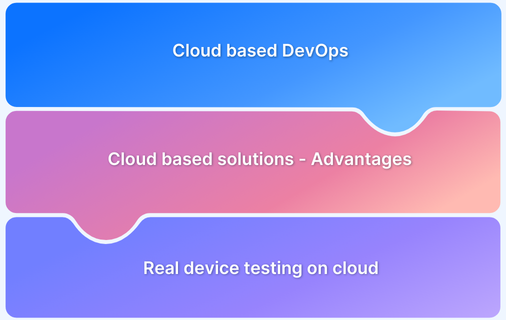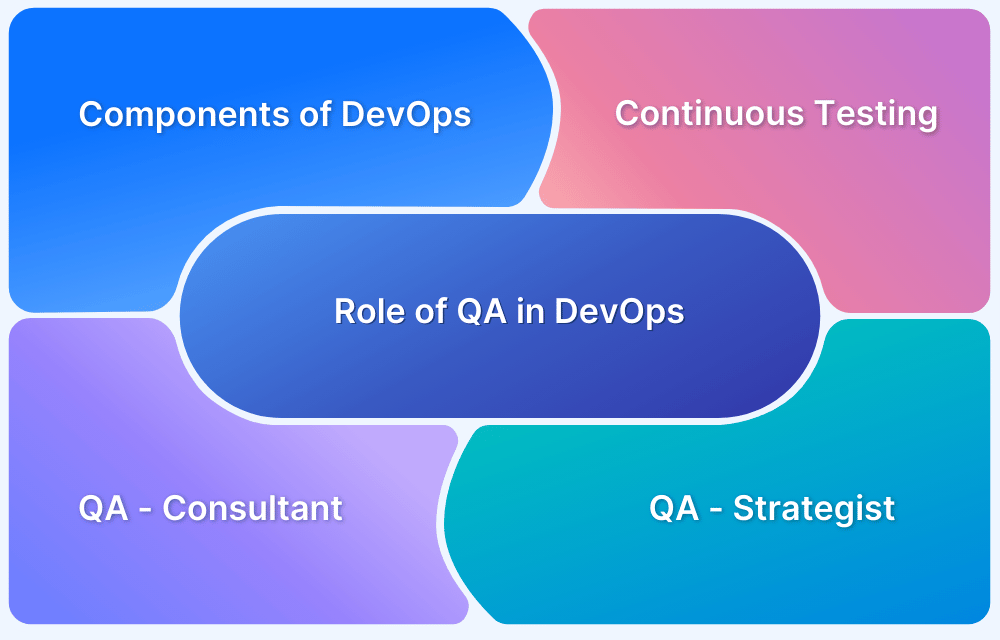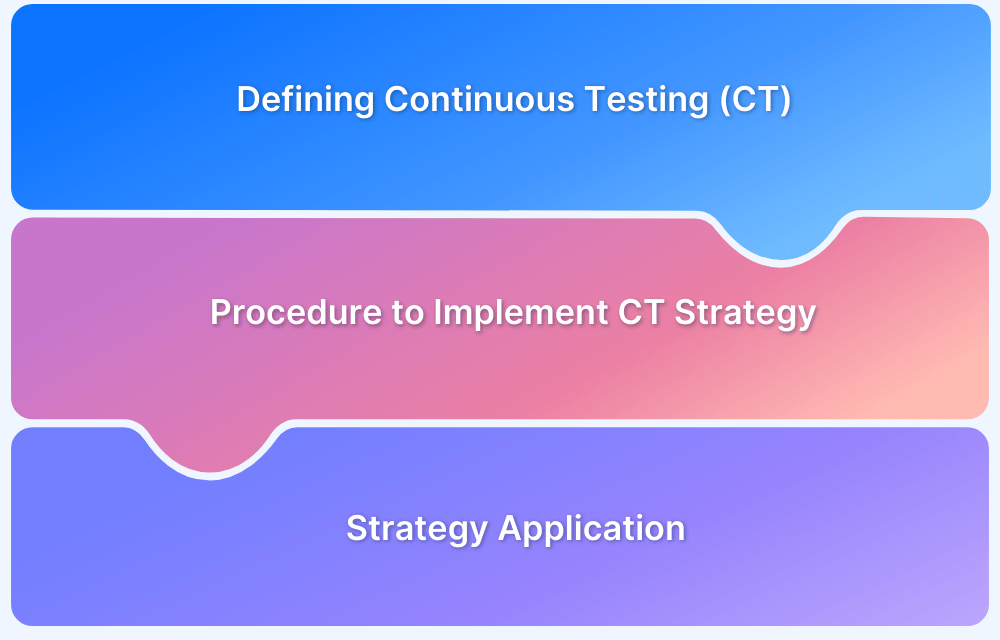MLOps vs DevOps: Key Differences and Similarities
By Kitakabee, Community Contributor - November 28, 2024
DevOps has long been used to describe the collaboration between software development and IT operations to streamline workflows. MLOps, a newer concept, combines DevOps principles with machine learning (ML) to optimize collaboration between development, data science, and operations teams.
While DevOps focuses on the software development lifecycle, MLOps extends this model to address the unique requirements of machine learning processes. Both aim to improve efficiency and reduce obstacles, but their approaches differ in scope and focus.
This article will explore the key differences and similarities between DevOps and MLOps.
What Is MLOps?
MLOps is a set of practices and processes for managing the development, deployment, and maintenance of machine learning models in a production environment.
It aims to bring the principles and practices of DevOps to the field of machine learning, allowing organizations to streamline and automate the deployment of ML models and manage their ongoing performance and maintenance.
Also Read: Artificial Intelligence in Test Automation
Benefits of MLOps
Below are the key benefits of MLOps:
- Faster Deployment & Scalability: Streamlines model development, deployment, and scaling across environments, reducing time to market.
- Improved Collaboration & Automation: Enhances teamwork between data scientists, developers, and operations while automating repetitive tasks for efficiency.
- Consistent Performance & Risk Reduction: Ensures reliable model performance with continuous monitoring, automated testing, and validation.
- Version Control & Resource Optimization: Provides better tracking of models and data while efficiently managing resources to reduce costs.
Tools for MLOps
There are multiple tools and platforms which provide a range of features for MLOps like experiment tracking, model deployment, monitoring, and maintenance. The choice of tool or platform will depend on the specific needs and requirements of your organization.
- TensorFlow Extended (TFX): A tool for deploying and managing TensorFlow models in production.
- Kubeflow: A platform for deploying and managing ML workflows on Kubernetes.
- Apache Airflow: A tool for scheduling and managing ML workflows.
- MLflow: An open-source platform for managing the ML lifecycle.
- Databricks: A platform for collaborative big data and ML development.
- H2O.ai: An AI platform for automated machine learning and deployment.
- AWS SageMaker: A managed service for building and deploying ML models.
What Is DevOps?
DevOps emphasizes automation, monitoring, and improved collaboration across teams, allowing faster and more reliable software delivery. It focuses on breaking down silos between development and operations, fostering continuous feedback and improvement.
DevOps is a software development methodology that removes roadblocks and achieves a continuous cycle of iteration and improvement. It aims to improve collaboration and minimize friction in the software development process.
Read More: DevOps Prerequisites
Benefits of DevOps
Below are the key reasons why DevOps is important:
- Increased Agility: Automating repetitive tasks allows teams to respond to changes and manage projects with greater flexibility quickly.
- Faster Time to Market: Automation of testing, deployment, and security enhances speed, enabling quicker product launches and updates.
- Enhanced Security: Integrating security throughout the development process (DevSecOps) ensures vulnerabilities are detected early, reducing risks and costs.
- Improved Communication and Collaboration: Close collaboration between development and operations teams leads to better problem-solving and faster issue resolution.
- Better Feedback Loop: Automated feedback from various stages of development ensures quicker identification and resolution of issues, improving product quality.
Tools for DevOps
You can automate and streamline the software development and deployment process using multiple tools and platforms like:
- Source code management (SCM) tools like Git, Subversion, and Mercurial
- Continuous integration (CI) tools like Jenkins, Travis CI, and CircleCI
- Continuous delivery (CD) tools like Ansible, Puppet, and Chef
- Configuration management tools like SaltStack, Chef, and Puppet
- Monitoring and logging tools like Nagios, Zabbix, and Logstash
- Containerization tools like Docker and Kubernetes
Also Read: Jenkins vs Ansible
Differences Between MLOps and DevOps
DevOps and MLOps are both essential for organizations aiming to streamline their workflows, improve collaboration, and enhance efficiency.
While DevOps focuses on automating and optimizing the software development lifecycle, MLOps specifically targets machine learning models, data pipelines, and their deployment into production. Below is a comparison table to highlight their key differences.
| Parameters | MLOps | DevOps |
|---|---|---|
| Scope | It focuses specifically on machine learning models and their deployment. | It focuses on the overall software development process. |
| Team Collaboration | MLOps emphasizes data management and model versioning. | It emphasizes collaboration and communication between development, testing, and operations teams. |
| Focus | It prioritizes model performance in production and monitoring. | DevOps prioritizes overall application performance and reliability. |
| Tasks | MLOps involves tasks like hyperparameter tuning and feature selection. | It involves tasks such as testing and deployment automation. |
| Core Tasks | It involves tasks such as model interpretability and fairness. | Executes tasks like infrastructure provisioning and configuration management. |
It’s worth noting that MLOps and DevOps are not mutually exclusive, and many organizations will use a combination of both practices to improve their software development processes.
Similarities Between MLOps and DevOps
As MLOps is a subset of DevOps, both ideologies have multiple similarities.
- Both MLOps and DevOps require close collaboration between different teams, including development, operations, and data science teams, to ensure smooth and efficient delivery of models and applications.
- Many MLOps tools and platforms integrate with existing DevOps toolchains, such as Git, Jenkins, and Kubernetes, making it easier for organizations to implement MLOps within their existing DevOps workflows.
- MLOps and DevOps promote a culture of experimentation, where teams can quickly test and validate new ideas and approaches, reducing the time and cost of delivering new features and capabilities.
- Both MLOps and DevOps emphasize the importance of monitoring and feedback loops to ensure that models and applications are working as intended and that issues are quickly identified and resolved.
Read More: Importance of DevOps Team Structure
Which One Should You Choose: MLOps or DevOps?
Choosing between MLOps and DevOps depends on your specific needs and goals. If your organization is focused on developing and deploying machine learning models, then MLOps may be the better choice.
But if your organization is focused on overall software development, then DevOps may be the better choice.
MLOps can help you manage the unique challenges of building, maintaining, and deploying machine learning models, like data management, model versioning, and monitoring model performance in production.
On the other hand, DevOps can help you improve the collaboration and communication between different teams within your organization to increase the overall speed and quality of your software development and deployment.
You can also decide by considering the maturity level of your organization. If it’s in the early stages of ML development, then it’s better to start with DevOps, as it’s a more general practice, and then gradually introduce MLOps as the ML development grows.
How to Bridge the Gap Between MLOps and DevOps?
Here are some tips for bridging the gap between MLOps and DevOps:
- Encourage close collaboration between the data science, development, and operations teams, and establish clear lines of communication to ensure that everyone is aligned on goals and processes.
- Automate as many workflows as possible, including model testing, validation, and deployment, to reduce manual errors and increase efficiency.
- Continuously evaluate and improve processes and workflows, and encourage experimentation and innovation to ensure that you are using the best possible tools and approaches for MLOps and DevOps.
- Implement DevOps monitoring and DevOps feedback loops to ensure that models and applications are working as intended, and that any issues are quickly identified and resolved.
Challenges of MLOps and DevOps
Below is an overview of the key challenges in both MLOps and DevOps.
| Parameters | MLOps Challenges | DevOps Challenges |
|---|---|---|
| Integration Complexity | Integrating ML models with existing systems (databases, pipelines). | Managing integration between development and operations teams. |
| Governance & Accountability | Addressing model governance issues like transparency and ethics. | Managing cultural shift and collaboration across teams. |
| Scaling & Performance | Scaling ML models and handling large datasets. | Managing the rapid pace of changes in large, complex applications. |
| Monitoring & Maintenance | Ongoing monitoring and performance tuning of ML models. | Ensuring continuous delivery and maintaining quality control. |
| Cost & Resource Investment | High costs of infrastructure and tools for model deployment. | High upfront costs for tools, processes, and continuous maintenance. |
Despite these challenges, strategic practices in both MLOps and DevOps can help organizations improve agility, efficiency, and scalability while maintaining high security and performance standards.
Best Practices of MLOps and DevOps
Below is a list of some of the best practices for both MLOps and DevOps:
Best Practices for MLOps
- Automate MLOps processes to minimize errors and increase efficiency.
- Track experiments and version control to monitor model changes and performance.
- Use CI/CD pipelines for rapid and seamless model deployment to production.
- Ensure ML models are designed to scale and perform optimally in production environments.
Best Practices for DevOps
- Prioritize rapid software delivery with quick rollback options.
- Align business, operations, and development teams for cohesive collaboration.
- Keep up with new tech trends to avoid obstacles in development.
- Run comprehensive tests on all code, both manually and automatically.
- Integrate automation and use suitable CI/CD tools for a streamlined DevOps workflow.
BrowserStack provides different integrations with the best CI/CD tools as TeamCity, Travis CI, Jenkins, Jira, etc., for better implementation of DevOps.
It also provides a dedicated cloud Selenium grid of 3500+ real browsers and devices for testing. You can access our in-built debugging tools for identifying and resolving bugs. You can also test using frameworks like Appium, Espresso, XCUITest, EarlGrey, Cypress, Playwright, Puppeteer.
Future of MLOps and DevOps
The future of MLOps and DevOps is likely to be shaped by several trends and developments.
Cloud platforms will play an increasingly important role in MLOps and DevOps, as organizations look to take advantage of their scalability, reliability, and cost-effectiveness to support the deployment and management of models and applications.
Also, as organizations look to improve the speed and efficiency of model development and deployment, there will be an increased focus on automation, including the use of AI and machine learning algorithms to automate workflows and reduce manual errors.
MLOps and DevOps will continue to evolve and become more sophisticated as organizations look to leverage these approaches to deliver models and applications faster, with higher quality, and with greater reliability.
Both methodologies offer different features and advantages to data science and IT teams.
But ensure that your MLOps and DataOps teams shouldn’t ignore the continuous testing phase of the workflows as it can hinder the desired output.
Conclusion
MLOps and DevOps are essential frameworks that streamline workflows, enhance collaboration, and enable rapid, reliable software and machine learning deployments.
By incorporating best practices for automation, continuous integration, and version control, organizations can optimize their processes, reduce errors, and more effectively deliver value to users.
BrowserStack supports DevOps with seamless CI/CD integrations and a cloud Selenium grid of 3500+ real devices and browsers, enabling fast, reliable testing across platforms.
Useful Resources for DevOps
Understanding DevOps:
- What is DevOps
- DevOps Shift Left Testing: A Detailed Guide
- What is the ultimate goal of DevOps?
- Benefits of DevOps
- What is DevOps Configuration Management?
- What is Continuous Delivery in DevOps?
- What is a DevOps Pipeline? How to Build One
- What is DevOps Observability (Importance & Best Practices)
- DevOps Testing Strategy
- How to improve DevOps Feedback Loop
- Python For DevOps: An Ultimate Guide
- What is DevOps Automation and How is it Helpful?
- Importance of DevOps Team Structure
- The Role of QA in DevOps
- Top Challenges in DevOps and How to Solve Them
- Top 21 Monitoring Tools in DevOps for 2024
Know the difference:
- DevOps vs Scrum: Key Differences
- Breaking Down MLOps vs DevOps: Similarities and Differences
- DevOps vs SysOps: What are the major differences
- DataOps vs DevOps: Key Differences
- TechOps, DevOps, and NoOps: Which one is right for you?
- DevOps vs CloudOps: How are they different
- DevOps Engineer vs Full Stack Developer: Differences
- Synchronize Business Analysis, DevOps, and QA with Cloud Testing




